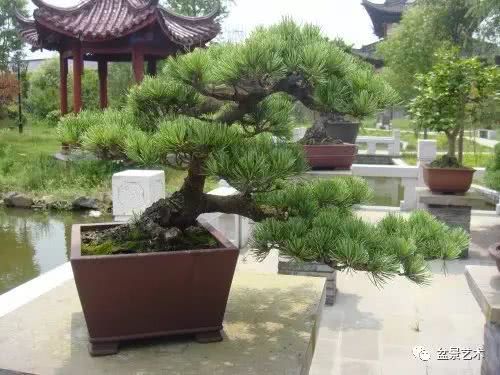Culture and Management of Winter Coral in Pot

Winter coral planting, soil, water and fertilizer, light and other conditions are conducive to the normal growth and flowering and fruiting of the plant, so it can flourish leaves and red fruit without careful management. However, due to the limitation of cultivation containers and climatic factors, too much water can easily lead to rotten roots, fallen leaves or flowers, while too dry pot soil can easily lead to plant root atrophy, plant withering and defoliation, and it is difficult to bloom and bear fruit normally. Especially during the flowering period, if the potted soil is dry and wet and the fertilizer concentration is out of control, it is easy to lead to only flowering, no fruit or light flowering and less fruiting.
Potted winter corals require the use of loose, fertile, well-drained sandy loam soil rich in organic matter, with 5% retted cake fertilizer or chicken and duck manure. After transplanting the seedlings into the pot, spraying the new high-fat film can effectively prevent the aboveground water from evaporating, the seedling water from not transpirating, isolating the diseases and insect pests, shortening the slow seedling period, quickly adapting to the new environment and growing healthily.
After the slow seedling stage survived, carry on the normal water, in order to keep the basin soil moist for the degree, loosen the soil and fertilize once a half month. And give sufficient light, when the plant is about 10 cm high, take the head off the heart to promote cuteness. Spraying Chuhuawang No. 3 can transform plant vegetative growth into reproductive nutrition, inhibit the crazy growth of main shoots and promote flower bud differentiation. Plants enter the bud stage, suspend fertilization, at the same time control watering, try not to spray water, can avoid flushing pollen. Spray Zhuangguotieling, thicken the pedicel, increase the amount of nutrition transport, prevent flower and fruit drop. When the fruit grows to the size of mung bean, the cake fertilizer can be restored, the amount of water can be increased, and proper foliar spraying can be given at the same time. When the fruit diameter is 0.5 cm to 0.6 cm, the over-dense small fruits should be properly removed, and the diseases and insect pests should be removed at the same time, so that the fruits on the potted plants can be evenly distributed and symmetrical in size, so as to improve the ornamental value of potted plants.
Potted winter corals are easy to suffer from anthracnose when they are at high temperature in summer, which is mainly harmful to leaves and stems. There are two symptoms: one occurs on time sheets, and the leaves show round disease spots at the initial stage of the disease, changing from round reddish brown to grayish white. then turn dark brown and produce black spots arranged in the wheel, that is, the conidium disk of the pathogen, the disease occurs at the leaf edge and leaf tip, and when the leaf is serious, the leaf withered and died. The pathogen is fungal disease, the pathogen overwinters with mycelium in parasitic remains or soil, the old leaves begin to occur from late April to early May, the disease is faster from June to July, the disease is more serious in the rainy season, and the new leaves begin to occur in August. If the potted flowers are placed too densely, the leaves cross each other and it is easy to spread the disease, but there are differences in disease resistance among varieties.
Prevention and control methods:
1. Disease control:
Select excellent varieties with disease resistance.
In the early stage of the disease, cut off the diseased leaves and burn them in time to prevent the spread of bacteria, avoid being too dense and drenched at the head, and often maintain ventilation and light transmission.
At the initial stage of the disease, spray 50% carbendazim wettable powder 700-800 times or 75% chlorothalonil 500 times.
2. Pest control:
Winter coral pests are mainly aphids, small, green or black, often clustered on the tender branches and leaves of a variety of flowers to suck nutrients.
Prevention and treatment: spray with 2000 times of omethoate EC or 1500-2000 times of dichlorvos EC.
- Prev

Time-saving and labor-saving tips are worth sharing and collection. come and have a look.
Let's take a look at some time-saving and labor-saving tips. If the tape affixed to the wall or table is taken off bluntly, it may damage the object. If pressed with a steam iron, it can be easily removed.
- Next

Rapid prototyping of five-needle pine bonsai
1. Five-needle pine bud grafting and branch high grafting are two different forms, but their methods and effects are the same, only the scion is different. The method is as follows: the selection of rootstocks is to select the potted black pine with bonsai embryonic form.
Related
- Wuhan Hospital Iron Tree Blooming Result Was Instantly Frightened by the Gardener Master
- Which variety of camellia is the most fragrant and best? Which one do you like best?
- What is the small blue coat, the breeding methods and matters needing attention of the succulent plant
- Dormancy time and maintenance management of succulent plants during dormancy
- Minas succulent how to raise, Minas succulent plant pictures
- What are the varieties of winter succulent plants
- How to raise succulent plants in twelve rolls? let's take a look at some experience of breeding twelve rolls.
- Attention should be paid to water control for succulent plants during dormant period (winter and summer)
- Watering experience of twelve rolls of succulent plants
- Techniques for fertilizing succulent plants. An article will let you know how to fertilize succulent plants.

